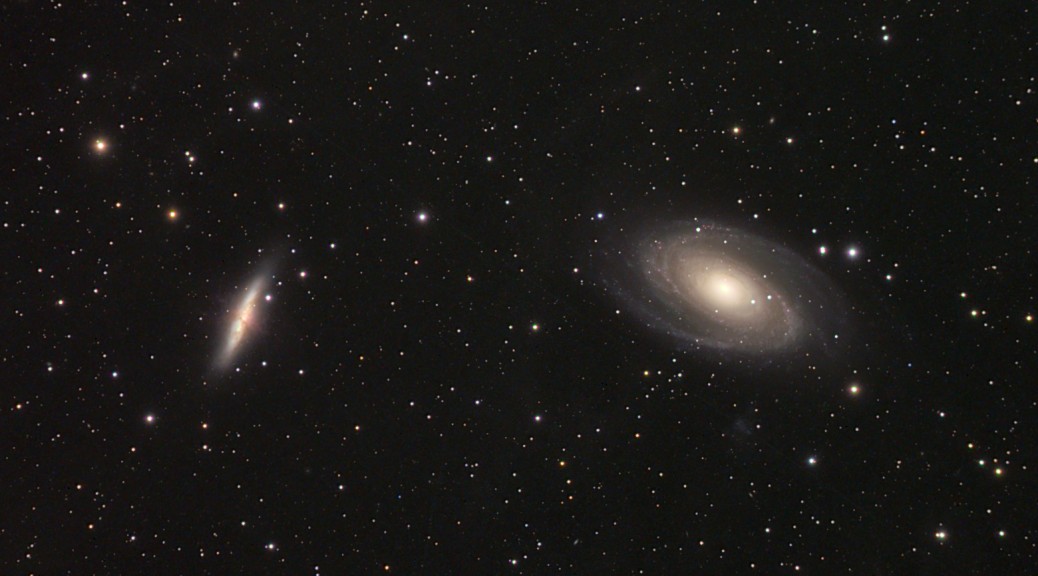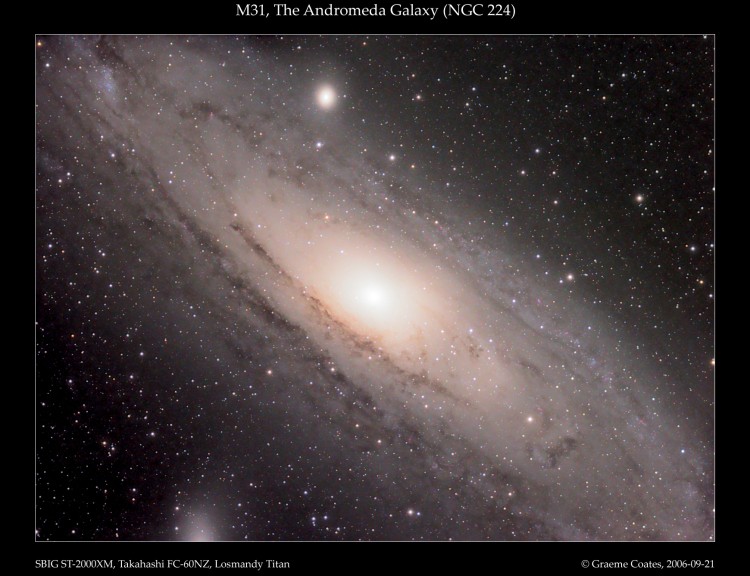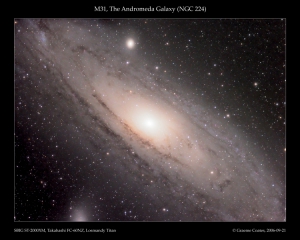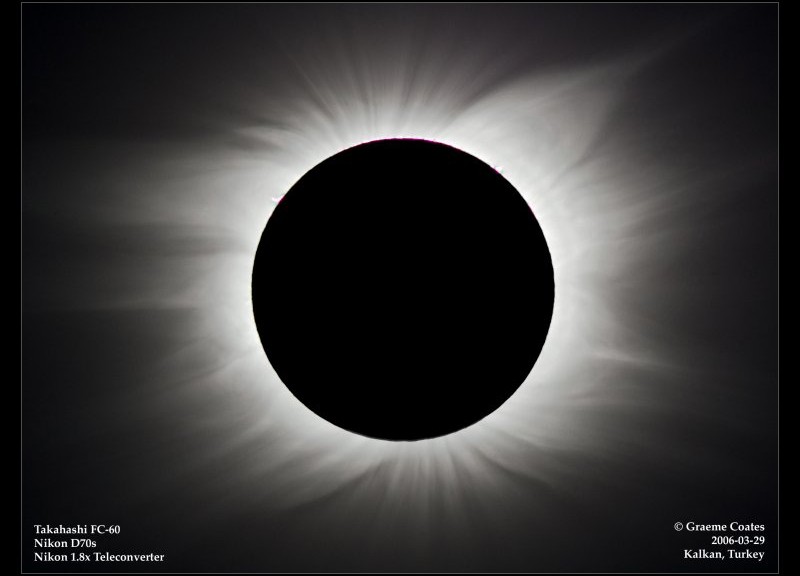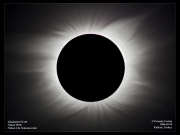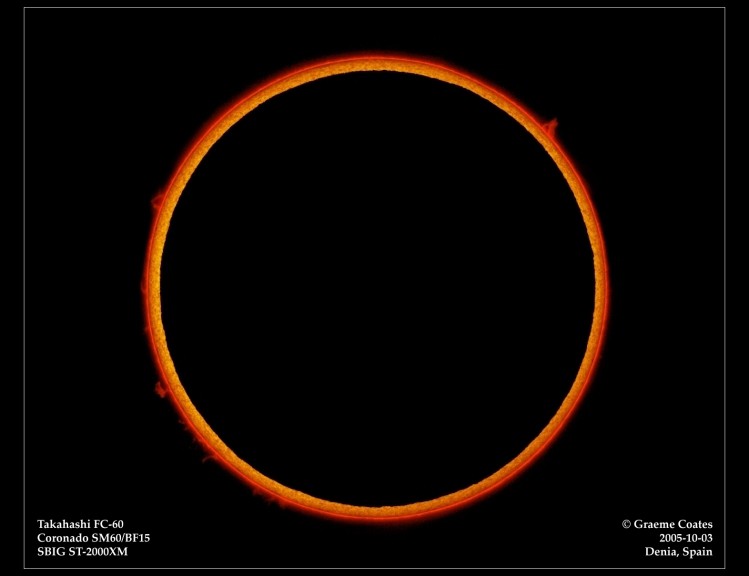Image centred at: RA: 09h 55m 34.7s, Dec: +69°19′ 52″
Up is 89 degrees E of N
(Plate solve from nova.astrometry.net)
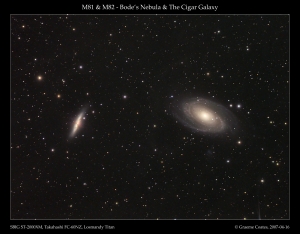 M81 and M82 in Ursa Major are two of the brightest members of the M81 group of galaxies. M81 (often called Bode’s Nebula after being discovered by Johann Elert Bode in 1774) is a large bright spiral approximately 12 million light-years distant, whilst M82 (the “Cigar Galaxy”) is an irregular starburst galaxy, highly disturbed by gravitational interaction with other members of the group.
M81 and M82 in Ursa Major are two of the brightest members of the M81 group of galaxies. M81 (often called Bode’s Nebula after being discovered by Johann Elert Bode in 1774) is a large bright spiral approximately 12 million light-years distant, whilst M82 (the “Cigar Galaxy”) is an irregular starburst galaxy, highly disturbed by gravitational interaction with other members of the group.
This was taken from Kelling Heath at the 2007 Spring Star Party on an excellent night after we had been fogged out for the previous two nights! I’m hoping to go again this year to do some more imaging…
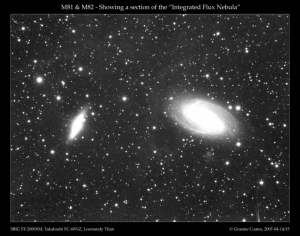 In the region of M81 and M82 (and across large parts of the northern sky), there is a large faint nebular complex associated with dust and gas expelled from the plane of the galaxy. The region here is part of MW3 (Mandel-Wilson Catalog of Unexplored Nebulae) and the faint dusty areas show up faintly in a strongly stretched image of the region. This has been refered to as an “Integrated Flux Nebula” since it reflects the galaxy’s light rather than that of a single star. Also visible is Holmberg IX (below M81) which is a small, faint blue irregular galaxy also in the M81 Group.
In the region of M81 and M82 (and across large parts of the northern sky), there is a large faint nebular complex associated with dust and gas expelled from the plane of the galaxy. The region here is part of MW3 (Mandel-Wilson Catalog of Unexplored Nebulae) and the faint dusty areas show up faintly in a strongly stretched image of the region. This has been refered to as an “Integrated Flux Nebula” since it reflects the galaxy’s light rather than that of a single star. Also visible is Holmberg IX (below M81) which is a small, faint blue irregular galaxy also in the M81 Group.
